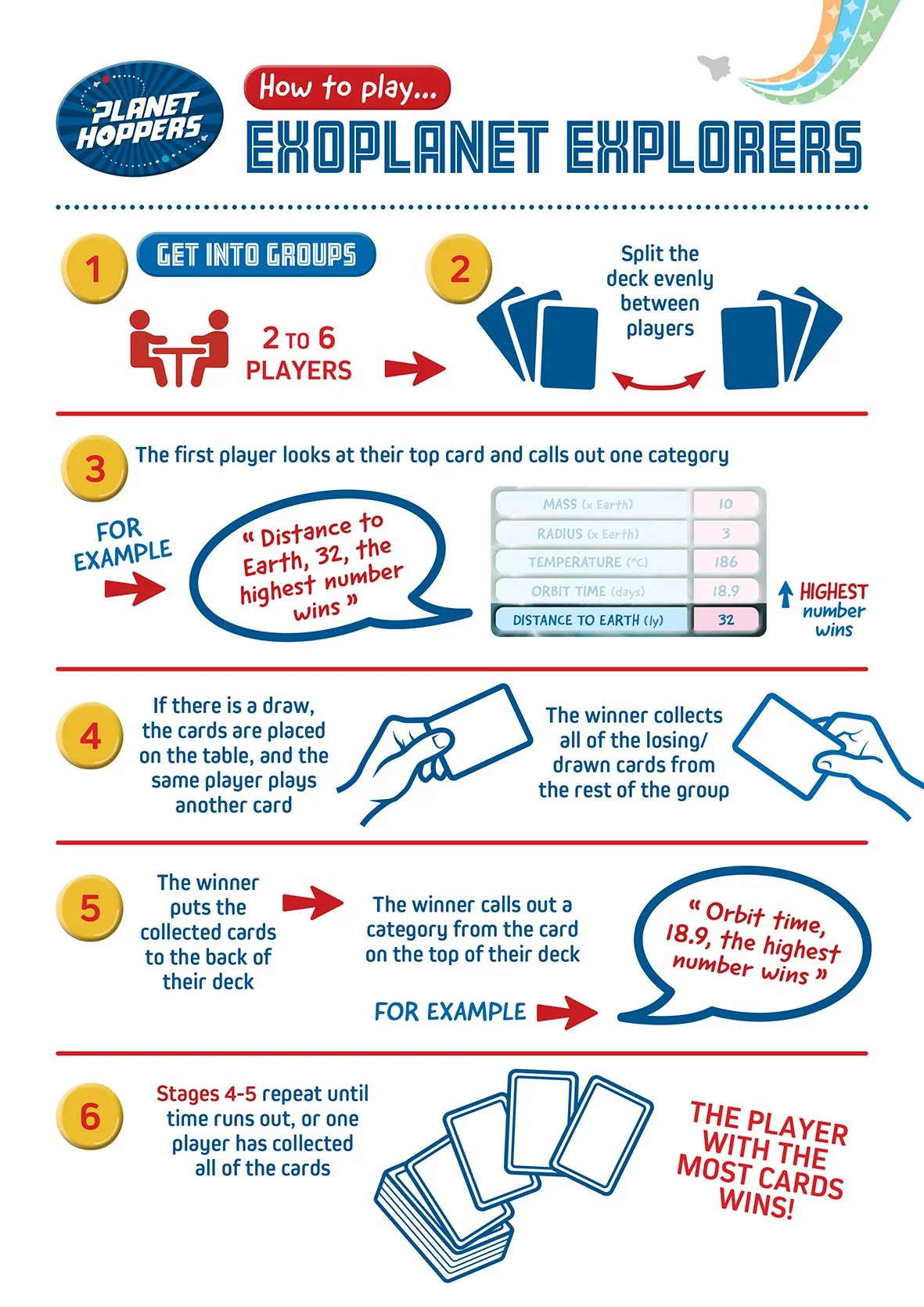How to play…
Exoplanet Explorers
Exoplanet Explorers is an engaging, science-based card game designed to spark curiosity about space and planetary science. Students play by comparing real astronomical data from exoplanets, planets orbiting stars beyond the Solar System, and using that information to win cards.
THIS GAME ENCOURAGES
Numeracy and data comparison skills
Scientific vocabulary use
Turn-taking, strategy, and teamwork
Curiosity about astronomy and the wider universe
It's ideal for 2–6 players per group and works well as a 15-minute classroom activity. Whether used as a lesson starter, enrichment task, or informal assessment of scientific reasoning, Exoplanet Explorers is a fun and flexible way to bring space science into your teaching.
Download and print the A4 step-by-step guide HERE, and walk your students through the sheet. Distribute the decks, organise small groups, and let the exploration begin!
Exoplanet Explorers FAQ
Explore the wonders of the universe with your students through Exoplanet Explorers. This downloadable FAQ resource is designed to support classroom discussions, spark curiosity, and deepen understanding of planets beyond our Solar System.
Download and print the A4 FAQ sheet HERE to provide clear answers and engaging content that enriches your lesson.
Classroom activity plans and worksheets
Content Coming Soon!
We’re working on exciting new material. Check back to explore more.
Discussion prompts
Jumpstart meaningful classroom conversations with our Exoplanet Explorers discussion prompts. This downloadable resource covers key topics, including various planet types such as gas giants, Super Earths, and others, as well as the methods scientists use to detect them. Perfect for sparking curiosity, encouraging critical thinking, and supporting your space science lessons. Click on the images below to download A4 sheets.
Follow-up project ideas
Content Coming Soon!
We’re working on exciting new material. Check back to explore more.
Supporting materials
Fun facts about Exoplanets
Physics, made short, supported by the UK Science and Technology Facilities Council
Can we photograph an Exoplanet?
What other methods can we use to detect exoplanets?
What are the limitations of the transit method?
How do we prove Exoplanets exist in the vast emptiness of space?





